How to make a snag for an aquarium with your own hands?

The driftwood in the aquarium is considered an important element. Based on its shape, size and characteristics, vegetation, moss and other necessary elements are selected. Also, the presence of snags creates a special environment for fish, close to natural. Pet stores offer a wide range of snags, but you can make such a product yourself. It is enough just to choose, prepare and process the wood correctly.
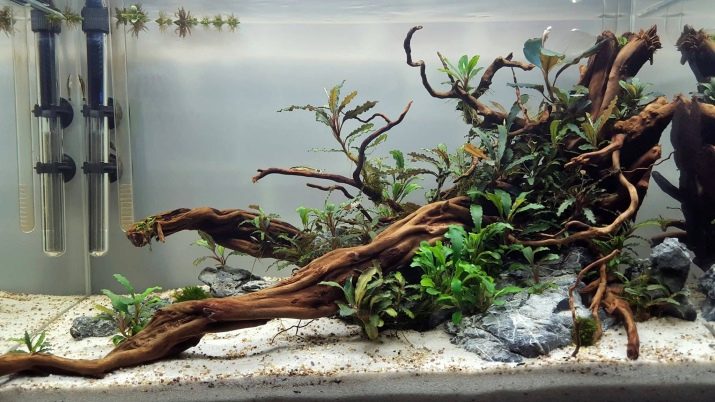
Advantages and disadvantages
First you need to figure out what are the functions of driftwood in the aquarium.
- The product creates an aesthetic appearance of the reservoir, completes the water landscape.
- Such an element of decor serves as a place for fish to relax, play or even spawn.
- Some fish species (for example, catfish) feed on bark, which is peeled off the tree. The substances contained in wood prevent diseases of the digestive system and improve the digestion process itself.
- Tannin and tanning components, which also release wood, disinfect water and destroy harmful microbes. These components are absolutely safe for fish.
- Creation of natural conditions favorably affects the growth and development of fish.
Of course, driftwood in aquariums is the main element of the decoration of the underwater world. They can perform the main role in the design, located in the foreground or in the central part of the reservoir. They may also be less visible and placed in the background. In this case, the driftwood will serve as an excellent home for fish. Some species like to hide their fry in the twisting branches.
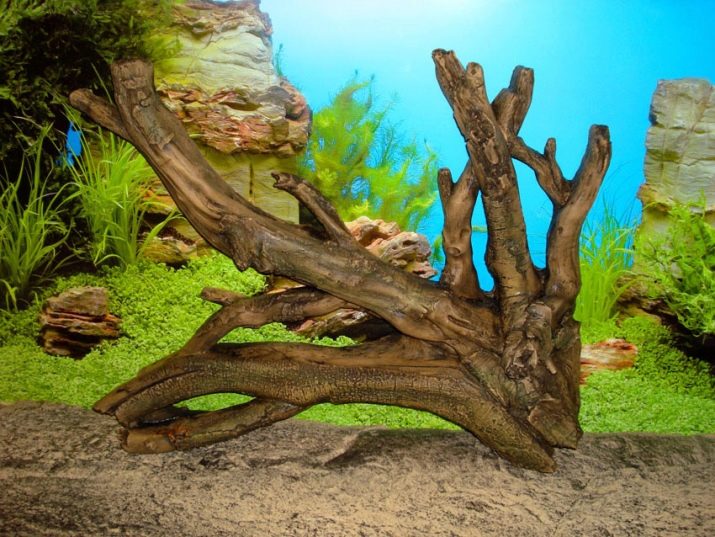
The main advantage of the presence of driftwood in a reservoir is water softening by increasing acidity.
In the natural environment, a large number of branches and leaves enter water bodies, which creates an optimal water composition for the life of fish. Therefore, in an artificial habitat, the components released by wood when they enter the water saturate the reservoir with all the necessary substances and acids for the normal life of the inhabitants of the aquarium.
It is worth noting some of the disadvantages of woody snags. Wood stains the water. But do not worry, it will not harm the inhabitants of the reservoir. You can boil the branch thoroughly and after several water changes the color will disappear. If the shade remains, you need to get rid of the branch and pick up another one.
Another minor problem is white bloom... Again, this is not a big deal.
White bloom means the appearance of beneficial bacteria.
If there are catfish in the aquarium, then they are happy to peel off this layer of bark. It is worth worrying if an old driftwood has acquired such a bloom. This means that the branch has begun to rot and must be urgently removed from the aquarium.
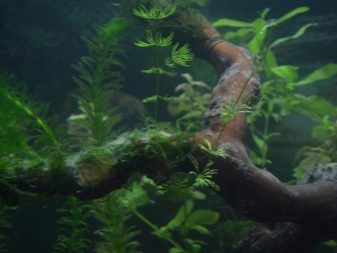
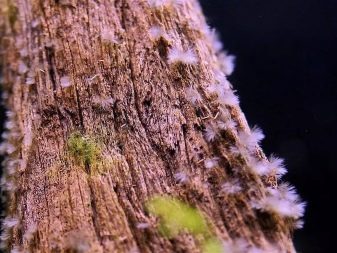
If the branch is covered with a green bloom, then this means the appearance of algae. The length of daylight hours affects the development of a favorable environment for their reproduction. Therefore, in order to get rid of them, it is enough to reduce the daylight hours.

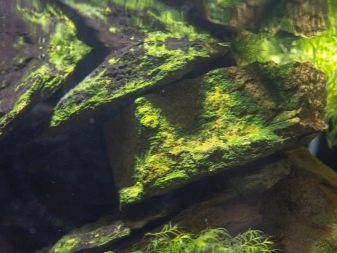
How to choose?
To make a snag for an aquarium with your own hands, you first need to find it. Do not pick up the first stick that comes across. The best way - it is wood taken from a forest, a park and a nearby body of water. You need to take a good look at the selected snag. It is worth paying attention to the type of wood.
The best option would be a branch from apple, vine, willow, beech, alder, pear and plum... Also oak branches are great for an artificial reservoir.
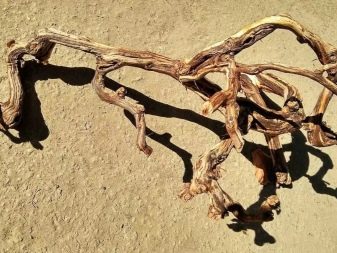

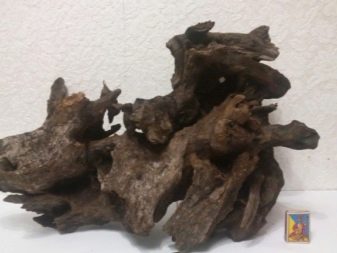
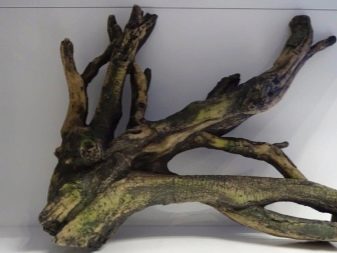
You should not choose soft tree branches. In the aquatic environment, they quickly rot and decay.
It is not recommended to apply parts of conifers such as pine and cedar. Also, parts of living trees cannot be used. The driftwood must be dry. If you liked the option of living wood as a driftwood, then you should first cut down the part you like and dry it well in a ventilated place or in the sun.
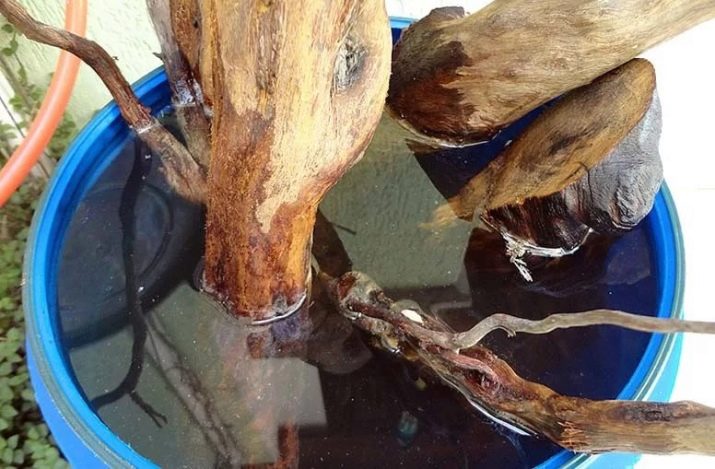
When choosing branches for an artificial reservoir on your own, the following nuances should be taken into account.
- The size of the branch should correspond to the volume of the reservoir. Do not choose too large a snag, it should not take up much space. But even small branches will knock out of the landscape. Against the general background, they look imperceptible and ridiculous. The driftwood needs to be in harmony with the underwater design.
- Thick driftwood can be used - wood that has been in water for a long time. The ideal solution would be branches from reservoirs with running water.
- It is not recommended to use rotten wood. An excellent and safe option is considered to be tree branches, on the trunk of which there are insect grooves.
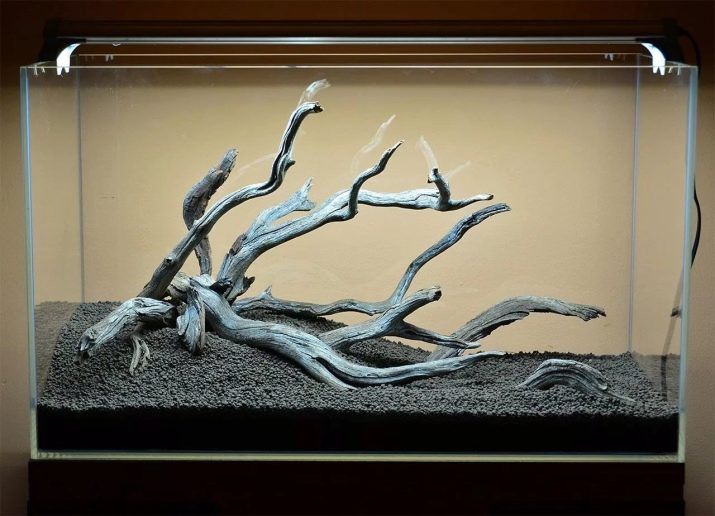
If you have funds, you can go to the store and purchase the finished product. In pet shops today there is a large assortment of snags from mangroves, mopani and exotic plant species. The products are durable and look original.
But it is worth noting that the branches of mangrove and mopana plants color the water. Careful boiling will not fix the problem.
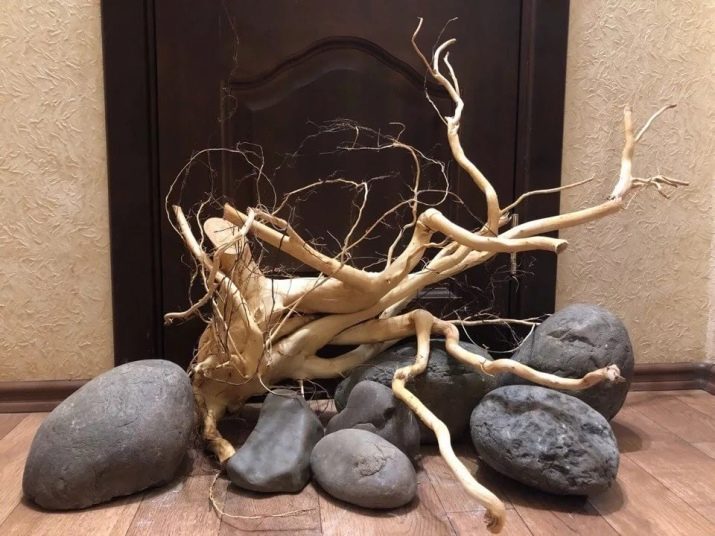
Preparation and processing
Self-production of driftwood consists in the correct preparation and processing of the product. First you need to prepare the branch for the boiling process. To do this, inspect the wood for rot and bark particles. Over time, the bark begins to rot and poison the aquatic environment, which adversely affects the health of the fish and further leads to their death. Therefore, the remnants of bark and rot are removed.
The underwater environment of the aquarium is vulnerable and sensitive. Any changes can affect the well-being of the inhabitants of the reservoir.
Therefore, the processing of decorative elements made from natural materials should be approached with great responsibility.
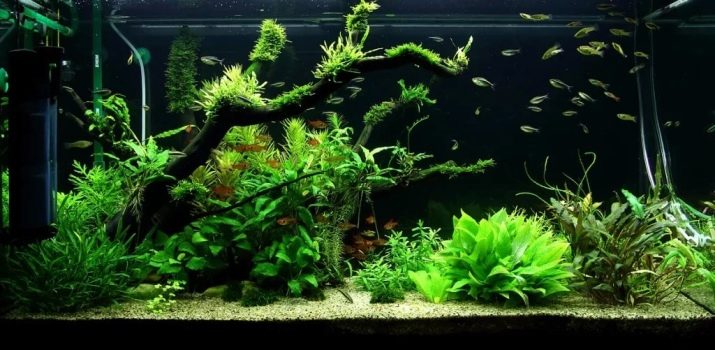
The way to handle driftwood is to boil the tree. You cannot do without boiling. With this treatment, all bacteria, harmful spores, microbes and insects that inhabit the wood are destroyed.

Step-by-step processing instructions are as follows.
- First, you should thoroughly rinse the branch. under running water.
- Next, the snag must be properly soaked. The wood is placed in a saline solution for one hour. The solution must be strong (add up to 400 g of salt to 1 liter of water). It is recommended to boil the branch in the same solution.
- Boil driftwood in a stainless saucepan or cookware with an enamel coating (aluminum cookware cannot be used). You need to cook the tree for at least 4, and preferably 6-10 hours.
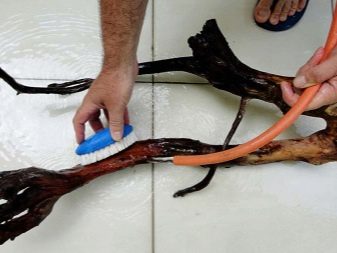
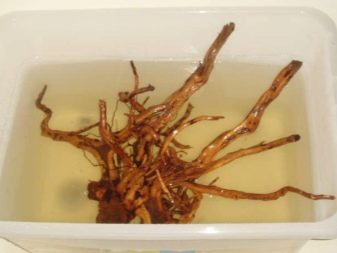
During boiling, care must be taken to ensure that the water does not evaporate. It is also necessary to check the tree for buoyancy. From time to time, you should press the driftwood to the bottom of the pan. If it floats, you must continue boiling.
If the branch was previously in a natural reservoir, then it will immediately sink. It is enough to cook such snag for 6 hours.
Store decor items also need processing. The duration of the boiling process depends on the shape and thickness of the branches. Large driftwood takes longer to cook. All parts of it may not fit completely in the dishes. Therefore, the snag is sometimes turned over and each part is boiled separately for several hours.

It is worth paying special attention to the boiling of the vine. The uprooted thin branches of grapes are boiled for about 5 hours. After boiling, they are soaked for 2-3 days, periodically changing the water. At the same time, the wood is quickly saturated with moisture and immediately sinks.
When cooking, you can add a little potassium permanganate to the water. This additionally disinfects the water and gives the wood a dark shade.
After boiling, the branch must be left under running water or placed in a basin for about a week. The water should be changed frequently. Such a procedure will rid the tree of the salt that it has absorbed during boiling. In addition, the long stay of the branch in water saturates it with additional liquid, and it begins to sink.
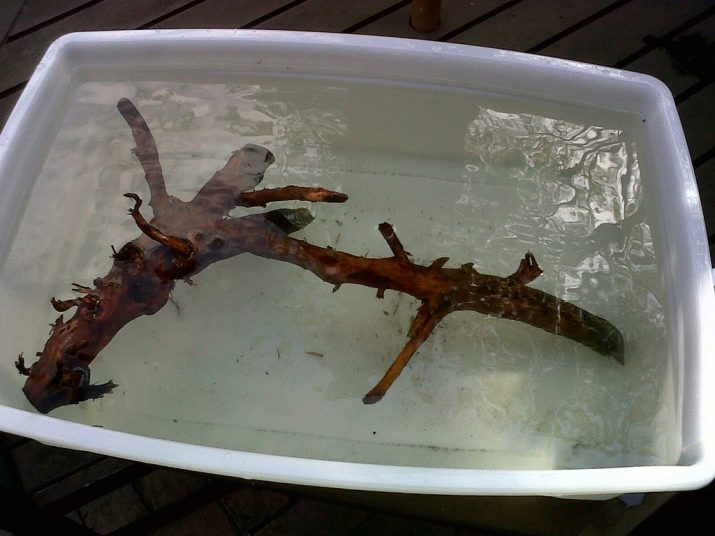
Some types of wood, when placed in a reservoir, still float. In this case, the product is attached to the bottom using additional devices.
After placing the tree in the reservoir, it is recommended to put catfish there. They will clean off small particles of exfoliated bark from the driftwood.
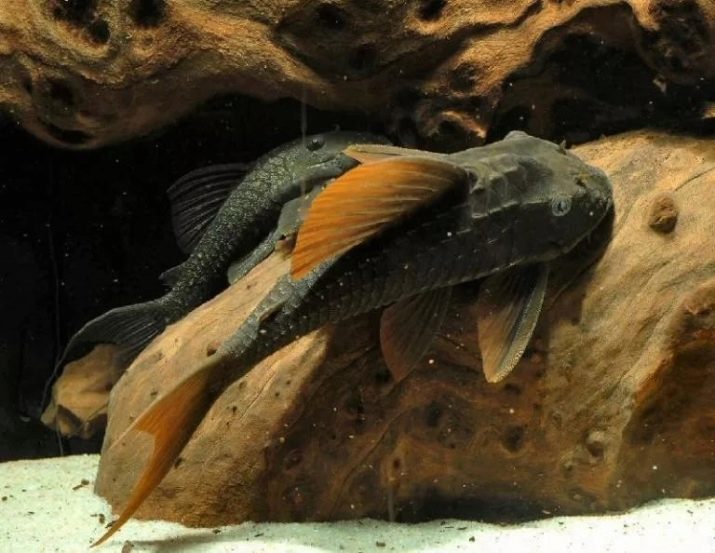
After moving the branch into the aquarium, pay attention to the color of the water. At first, the water will turn slightly brown. As a rule, the shade disappears after several changes of water. If the driftwood stains the water too much, it must be soaked again until it loses its coloring pigment.
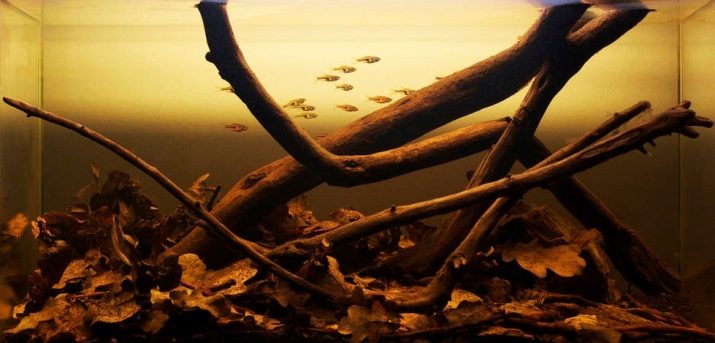
It is worth noting that even after thorough boiling in the branch, there may be remnants of rot, which begin to rot in the water at an even greater rate. There are several ways to prevent rotting.
- The wood is lightly burned with a blowtorch. You can burn both the entire surface and individual suspicious areas. After firing, the branch should be soaked for a couple of days, periodically wiping it and removing the layer of soot.
- Some aquarists advise pouring molten paraffin over the entire branch. This is the safest and most efficient way. After such treatment, the release of harmful substances into the reservoir is maximally prevented.
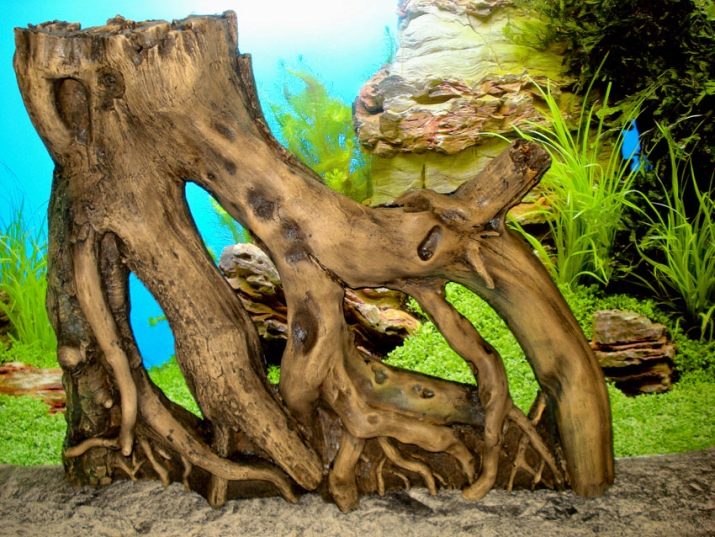
Making driftwood for an aquarium with your own hands is not an easy option. However, if there is a desire and a high degree of responsibility, it will not be difficult to do it yourself. You just need to choose the right branch and carefully process it. Properly processed driftwood is a source of useful components and substances that support the health of underwater inhabitants.

The following video shows how to make a driftwood for an aquarium from a dry branch of an apple tree.








